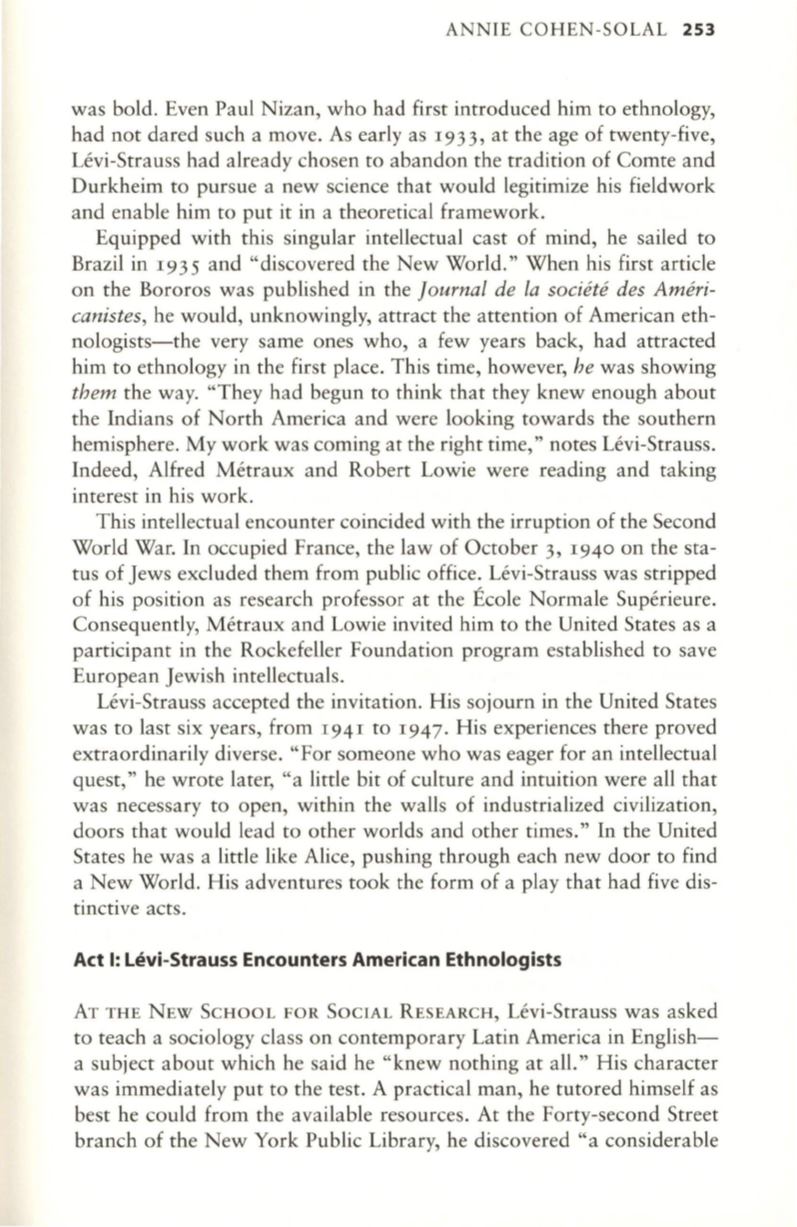
ANNIE COHEN-SOLAL
253
was bold. Even Paul Nizan, who had first introduced him to ethnology,
had not dared such a move. As early as
1933,
at the age of twenty-five,
Levi-Strauss had already chosen to abandon the tradition of Comte and
Durkheim to pursue a new science that would legitimize his fieldwork
and enable him to put it in a theoretical framework.
Equipped with this singular intellectual cast of mind, he sailed to
Brazil in
1935
and "discovered the New World." When his first article
on the Bororos was published in the
JournaL de La societe des Ameri–
canistes,
he would, unknowingly, attract the attention of American eth–
nologists-the very same ones who, a few years back, had attracted
him to ethnology in the first place. This time, however,
he
was showing
them
the way. "They had begun to think that they knew enough about
the Indians of North America and were looking towards the southern
hemisphere. My work was coming at the right time," notes Levi-Strauss.
Indeed, Alfred Metraux and Robert Lowie were reading and taking
interest in his work.
This intellectual encounter coincided with the irruption of the Second
World War.
In
occupied France, the law of October
3, 1940
on the sta–
tus of Jews excluded them from public office. Levi-Strauss was stripped
of his position as research professor at the Ecole Normale Superieure.
Consequently, Metraux and Lowie invited him to the United States as a
participant in the Rockefeller Foundation program established to save
European Jewish intellectuals.
Levi-Strauss accepted the invitation. His sojourn in the United States
was to last six years, from
1941
to
1947.
His experiences there proved
extraordinarily diverse. "For someone who was eager for an intellectual
quest," he wrote later, "a little bit of culture and intuition were all that
was necessary to open, within the walls of industrialized civilization,
doors that would lead to other worlds and other times."
In
the United
States he was a little like Alice, pushing through each new door to find
a New World. His adventures took the form of a play that had five dis–
tinctive acts.
Act I: Levi-Strauss Encounters American Ethnologists
AT THE NEW SCHOOL FOR SOCIAL RESEARCH, Levi-Strauss was asked
to teach a sociology class on contemporary Latin America in English–
a subject about which he said he "knew nothing at all." His character
was immediately put to the test. A practical man, he tutored himself as
best he could from the available resources. At the Forty-second Street
branch of the New York Public Library, he discovered "a considerable


